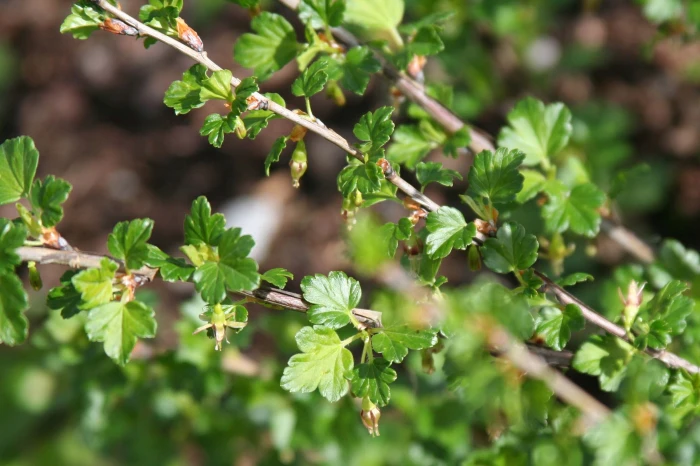Appalachian Gooseberry
(Ribes rotundifolium)
Appalachian Gooseberry (Ribes rotundifolium)
/
/

Image taken by Danny Dalton on 4/2/2007.
Public domain
Image By:
Image taken by Danny Dalton on 4/2/2007.
Recorded By:
Copyright:
Public domain
Copyright Notice:
Photo by: Image taken by Danny Dalton on 4/2/2007. | License Type: Public domain | License URL: https://creativecommons.org/public-domain/ | Uploader: Nonenmac | Publisher: Wikimedia Commons | Title: Ribes_rotundifolium_233-007.jpg | Notes: AnRo0002 moved page [[File:20130528Robinie Hockenheim4.jpg]] to [[File:20130528Robinia pseudoacacia Hockenheim4.jpg]] |




































Estimated Native Range
Climate Requirements for Clinton, Utah
| This Plant | Your Site | Plant Suitability for Your Location | ||
|---|---|---|---|---|
| • Precipitation | 21" - 79" | 19" | Your precipitation may be insufficient for this plant. Irrigate N" / year. | Irrigate N" / year |
| • High Temp. | 68°F - 89°F | 90°F | Your summers may be too hot for this plant. | Too hot |
| • Low Temp. | 9°F - 27°F | 20°F | Your winter temperatures are normal for this plant | Excellent |
This plant should grow well at your location with about N inches per year (Y minutes per month) of irrigation.
Summary
Ribes rotundifolium, commonly known as Appalachian Gooseberry, is a deciduous shrub native to the understory of deciduous forests in the Appalachian Mountains of the Eastern United States. It typically grows to a height and width of 2-4 feet (0.6-1.2 meters), featuring small, rounded leaves and producing greenish to red flowers in the spring, followed by edible, hairy berries. The flowers are modest in appearance, but the plant is valued for its fruit and wildlife support. The bark is usually thin and flaky, adding to its textured appearance in the landscape.
Appalachian Gooseberry is appreciated for its edible fruit and as a wildlife attractant, offering food for birds and other animals. It is used in forest gardening, as an understory plant in woodland gardens, and sometimes in native plant gardens. This shrub prefers partial shade but can tolerate full sun if provided with adequate moisture. It is adaptable to a range of soil types, provided they are well-drained. While it is not particularly drought-tolerant, it can withstand medium amounts of water. Gardeners should be aware of its thorny stems when planting and maintaining. Potential problems include gooseberry mildew and leaf spot diseases, as well as susceptibility to pests like aphids and gooseberry sawfly.CC BY-SA 4.0
Appalachian Gooseberry is appreciated for its edible fruit and as a wildlife attractant, offering food for birds and other animals. It is used in forest gardening, as an understory plant in woodland gardens, and sometimes in native plant gardens. This shrub prefers partial shade but can tolerate full sun if provided with adequate moisture. It is adaptable to a range of soil types, provided they are well-drained. While it is not particularly drought-tolerant, it can withstand medium amounts of water. Gardeners should be aware of its thorny stems when planting and maintaining. Potential problems include gooseberry mildew and leaf spot diseases, as well as susceptibility to pests like aphids and gooseberry sawfly.CC BY-SA 4.0
Plant Description
- Plant Type: Shrub
- Height: 2-4 feet
- Width: 2-4 feet
- Growth Rate: Moderate
- Flower Color: N/A
- Flowering Season: Spring
- Leaf Retention: Deciduous
Growth Requirements
- Sun: Full Sun, Part Shade
- Water: Medium
- Drainage: Slow, Medium, Fast
Common Uses
Bee Garden, Bird Garden, Butterfly Garden, Deer Resistant, Edible*Disclaimer: Easyscape's listed plant edibility is for informational use. Always verify the safety and proper identification of any plant before consumption., Hummingbird Garden, Low Maintenance, Rabbit Resistant
Natural Habitat
Understory of deciduous forests in the Appalachian Mountains
Other Names
Common Names: Wild Gooseberry
Scientific Names: Ribes rotundifolium, Ribes triflorum, Grossularia rotundifolia, Ribes gracile, Grossularia triflora, Ribes lathraeum
GBIF Accepted Name: Ribes rotundifolium Michx.